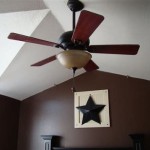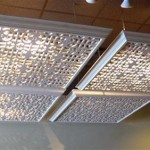Why Do Some Houses Have High Ceilings?
High ceilings, a defining feature in some architectural styles, have graced homes for centuries. While their presence is often considered a hallmark of luxury and grandeur, the reasons behind their implementation are multifaceted, going beyond mere aesthetics. From historical motivations to modern design considerations, the desire for high ceilings is rooted in a combination of factors, each carrying its own weight in shaping the character of a space. This article explores the various reasons why high ceilings have been and continue to be a valued design element in residential architecture.
Historical Roots and Practicality
High ceilings emerged as a practical necessity in the past. In pre-modern times, before the advent of efficient heating and cooling systems, tall ceilings allowed for better ventilation and natural light penetration. This was especially important in warmer climates where ventilation played a crucial role in maintaining a comfortable indoor temperature. Additionally, high ceilings helped to prevent the accumulation of smoke and fumes from fireplaces, a common source of heat in older homes.
The construction of high ceilings was also influenced by the availability of materials and construction techniques. In many historical buildings, the use of timber frames allowed for the creation of spacious and airy interiors that could extend upwards, reaching for the sky. The development of vaulted ceilings, particularly in Gothic architecture, further capitalized on the potential for height, creating impressive spaces that soared towards the heavens.
Architectural Expression and Design Intent
Beyond their practical functions, high ceilings also serve as a powerful architectural statement. They evoke a sense of grandeur, spaciousness, and elegance that can enhance the overall character of a building. In residential architecture, high ceilings are often associated with larger, more opulent homes, where they create a feeling of openness and spaciousness that is conducive to a luxurious lifestyle.
Different architectural styles often feature high ceilings in unique ways. For example, Victorian architecture often employs high ceilings with ornate moldings and decorative details, while modern architecture may utilize high ceilings in conjunction with large windows and minimalist designs to create a sense of openness and connection with the surrounding environment.
Psychological and Social Implications
High ceilings have been found to have a positive psychological impact on individuals, contributing to feelings of spaciousness, freedom, and power. They can create a sense of awe and wonder, promoting a feeling of well-being and relaxation. In social settings, high ceilings are often associated with status and prestige. They can create a more formal and impressive atmosphere, particularly in public spaces like museums, libraries, and grand halls.
Moreover, high ceilings can influence the acoustics of a space, creating a more resonant and reverberant sound environment. This effect can be desirable in certain settings, such as concert halls or churches, where sound quality is paramount. However, in residential settings, high ceilings may require special acoustic treatment to prevent unwanted noise or reverberation.
In conclusion, the decision to incorporate high ceilings in a home is influenced by a complex interplay of historical, practical, architectural, and psychological factors. From their origins as a practical solution for ventilation and light to their modern use as a powerful design statement, high ceilings continue to hold a prominent place in residential architecture, adding dimension and character to the spaces they inhabit.

High Ceilings And How To Live With Them Bob Vila
Why Do Many Old Buildings Have Tall Ceilings If They Were Former Factories Converted To Condos I Understand But What About Houses Was This A Sign Of Wealth Quora
Why Do Nearly All Houses Have Low Ceilings On The Upper Levels Quora

Decorating With High Ceilings

Understanding High Ceilings Real Estate Be Forward

High Ceilings And How To Live With Them Bob Vila

High Ceilings And How To Live With Them Bob Vila

High Ceilings In Old Houses Looking For Documentation Page 2 The Historic District

How To Take Advantage Of High Ceilings In Renovations Archdaily

Size Does Matter Kitchen Ceiling Discovery Swoon Worthy
Related Posts








